Despite being relatively simple, spark plugs play a significant role in any gasoline engine. Their function is to produce a spark at the required time that ignites the air and fuel mixture. All spark plugs, being exposed to extreme pressures and temperatures that occur during engine operation, wear out with time. This can cause poor engine performance, misfire and drop in fuel economy. Also, a worn spark plug can have a larger electrode gap, which requires higher voltage and can lead to premature ignition coil failure.
While replacing spark plugs on normal cars is a pretty simple task, it is more difficult on the Porsche 911 due to the engine’s horizontally opposed design and placement. Unless you have some experience working on cars, the right tools, and patience, we recommend going to an independent Porsche mechanic for this service.
For an overview of the procedure, check out the video above from YouTube channel, Invictus Motors Ltd. If you would like to do-it-yourself, you can find the parts, tools, and instructions below. Big thanks to Dave R. from Rennlist for giving us permission to re-use his DIY write-up and photos.
- K Tool International Low Profile Jack (3.33 Ton)
- ESCO 10499 Low Profile Flat Top Jack Stands (Pair) (2 required)
- Wheel Chocks
- 1/2-Inch Drive 19MM Non-Marring Lug Nut Socket
- Wheel Bolt Guide For Porsche, Audi, and VW (2 recommended)
- 1/2″ Drive Extension Breaker Bar (for wheel bolts)
- 1/2 Inch Drive Click Torque Wrench (25-250 ft.-lb.) (for wheel bolts)
- Mechanic’s Tool Set
- 3/8 Inch Drive Extension Set
- 3/8 Inch Drive Click Torque Wrench (10-80 ft.-lb.)
- 5/8 Inch Magnetic Spark Plug Socket
- 3/8 Inch Drive Universal Joint (for tight spaces)
- Torx Bit Mini-Ratchet Set, For Tight Spaces
- External Torx Socket Set, E4 to E24
- PB Blaster Penetrating Oil (for muffler removal)
- Disposable Gloves
- Safety Glasses
Spark plugs: 22 ft-lbs
Ignition coil screws: 7.5 ft-lbs
Heat shield screws: 7.5 ft-lbs
Wheel bolts: 118 ft-lbs
13 mm muffler bolts: 17 ft-lbs
Step 1: Prepare your vehicle and work area
- Ensure that your engine is cool so you don’t burn yourself and your car is parked on a flat surface.
- Gather your parts and tools and wear gloves and safety glasses.
- Since you’ll be removing your mufflers, soak the nuts and bolts with penetrating oil and wait 1 hour before removing them; this will prevent damaging the nuts and bolts.
Step 2: Raise the rear of your vehicle
- To give yourself enough clearance to work, safely raise your vehicle using a lift or jack and jack stands; ensure your car is level.
- If using jack stands, you just need to raise the rear of the vehicle.
- NEVER rely on a jack to keep your car up; use jack stands to safely support your vehicle.
- Also be sure to use wheel chocks to prevent your car from rolling.
- Once your car is on jack stands, give your car a hard shove to make sure it is secure.
- To lift your vehicle on jack stands, check out this helpful video from the YouTube channel CarFanatic.
Step 3: Remove the rear wheels
- With the parking brake engaged, use a 19 mm lug nut socket and breaker bar to loosen the wheel bolts.
- To prevent damaging your wheels during removal and reinstallation, you can use wheel guide bolts to help slide the wheels off and help you remove your rear wheels without damaging your wheels.
- As an added safety precaution, place a wheel under your vehicle’s engine block.
Step 4: Remove the mufflers.
- TIP: Again, the muffler bolts are likely to be very corroded, so be sure to soak the exhaust bolts with penetrating oil liberally and wait at least 30 minutes. If you feel like you are going to strip the bolts, just tighten them until they break because it’s much harder to deal with a stripped bolt. Be sure to replace any badly corroded fasteners.
- Within each wheel well, start by removing the body strut that attaches to the bumper so you have enough room to remove the mufflers. They are held on with 10mm bolts and T30 screws.
- Remove the exhaust tips by loosening the clamps with a E12 socket.
- Next, as shown in the video from Porsche911luv, use a 13mm socket to loosen the sleeve clamps that connects the mufflers to the catalytic converters.
- Remove the 3 remaining 13mm bolts (see photos) that hold the mufflers in place.
- Carefully wiggle each muffler out.
Step 5: Starting on one side of the engine, remove the spark plug heat shield.
- Remove the heat shield that covers the ignition coils and spark plugs.
- Each heat shield is secured by two bolts, which can be removed using an E10 socket.
- Note: You may not have enough room to fully remove the driver’s side heat shield. If not, just slide it out of the way, so you can gain access to the ignition coils and spark plugs.

Step 6: Remove the ignition coils.
- As shown in the photos, start by removing the ignition coil connectors.
- Depress the plastic tab on the connector, then wiggle the connector off; if you have a hard time getting the connector off, use a flat head screwdriver to gently work the connector loose.
- Remove the T40 torx screws that hold on each ignition coil using a ratchet and appropriate length extension.
- Work each ignition coil out. If extra space is needed, disconnect the cam solenoid shown in the photo with the blue glove.
- Inspect the ignition coils for cracks. If you see any, it is a good idea to replace them all.
Step 7: Replace the spark plugs with new ones.
- Remove the spark plugs using a magnetic spark plug socket (linked in parts section), appropriate length extension, and ratchet or breaker bar.
- It may be helpful to use a universal joint or a swivel magnetic spark plug socket to gain access to each of the spark plugs.
- Insert the new spark plug into your spark plug wrench and remove the cardboard covering the electrode tip; do not touch the tip.
- Insert the new spark plug into the spark plug tube and hand tighten to prevent cross threading. Once the plug is threaded in all the way by hand, torque it to 22 ft-lbs.
Step 8: Reinstall the ignition coils and heat shield.
- Insert the ignition coils back into the spark plug holes by rotating it back and forth slightly to help get it seated properly. Torque the T40 screws to 7.5 ft-lbs or just tighten them snug by hand.
- Connect the wiring harness connectors to the ignition coils and make sure it clicks in securely.
- Reconnect the cam solenoid if you removed it.
- Reinstall the heat shield and torque the screws to 7.5 ft-lbs or just tighten them snug by hand.
Step 9: Repeat the prior steps on the other side of the engine.
Step 10: Reinstall everything and lower your car.
- Reinstall the mufflers and torque the fasteners to 17 ft-lbs or just tighten them by hand.
- Reinstall the body struts.
- Reinstall the wheels and tighten the wheels in a criss-cross pattern to 118 ft-lbs.
- Lower your vehicle using the reverse steps you used to raise the vehicle.
- Remember to remove the wheel chocks.
- Clean up your work area and you’re all done!

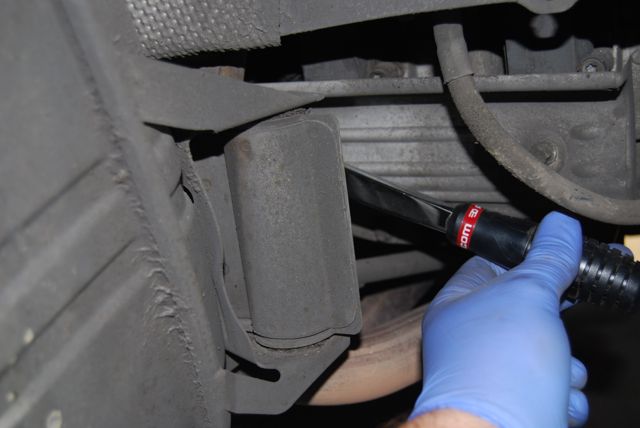
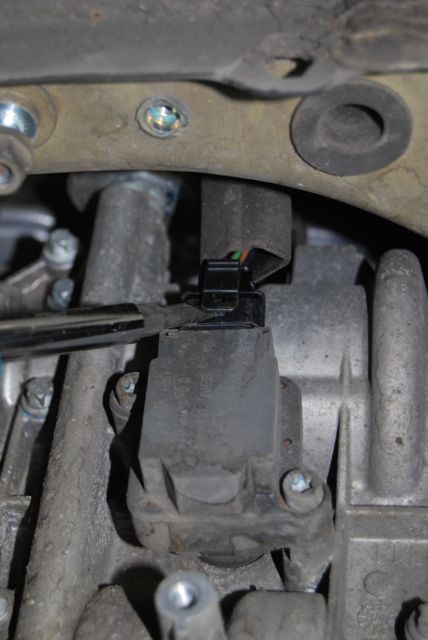
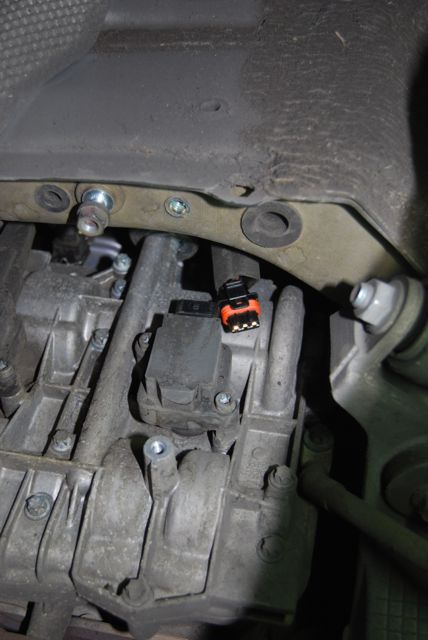
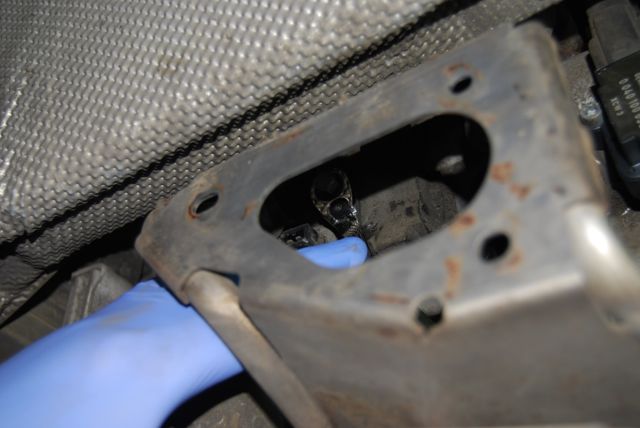

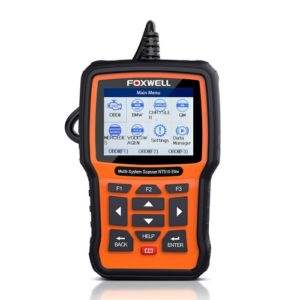
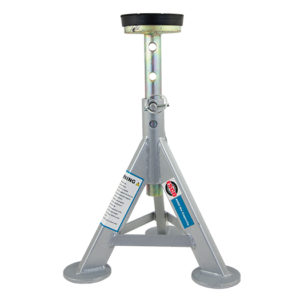
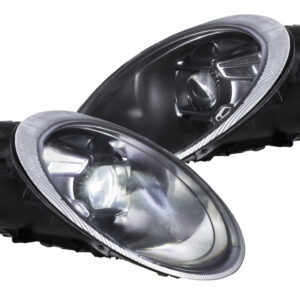

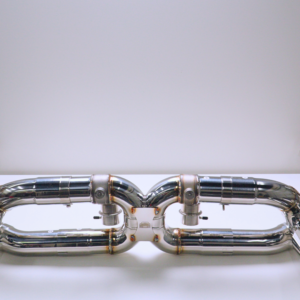

Michael Meyer says:
What is the correct gap?